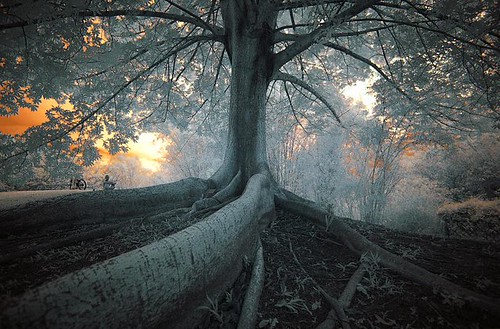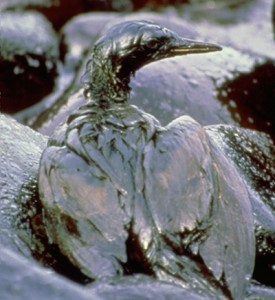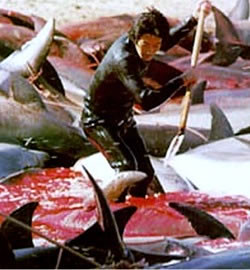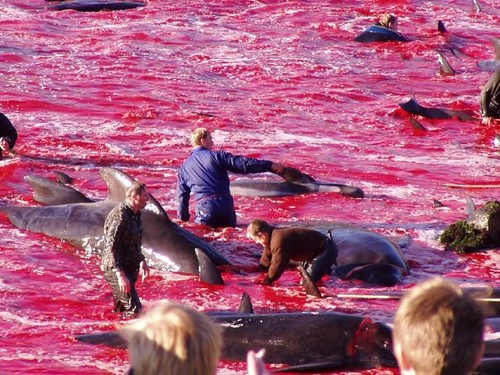No.
Instead, we've decided that this would be a great place to hunt! 325,000 seals are killed each spring with an additional 10,000 harp seal quota for an aboriginal allowance. During the 3-year period of 2003-2005, the Canadian Department of Fisheries and Oceans (DFO) allowed a kill quota of 975,000 baby and adult harp seals and 30,000 adult hood seals. Often times sealers exceed the quota by up 75,000. When the first European explorers landed on the East coast of Canada, there were an estimated 30 million harp, hood, and gray seals. Because of the reckless management of the hunt in the past, Canada allowed the number of harp seals to drop to 1.8 million in the early 1970s. Now they claim that a "healthy" population of 5.2 million exists but in the same breath admit that they have not had a peer-reviewed population survey since 1999.
Scientists and environmentalists endlessly dispute the Canadian governments' seal population claims, and suggest that the seal hunt is severely impairing the population, and will continue to harm their numbers, as the number of seals killed each year is significantly different than the number of seals born. The government plans to have a new population survey done, but while we all wait, thousands of seals are wantonly killed.
Are we willing to sacrifice everything, including our national reputation, to continue this hunt, which is nothing but a "make-work project for out-of-work fishermen"?
After the collapse of the East coast cod industry, the Canadian DFO has declared war on the seals in hopes that massive seal kills will bring back the cod and keep their fishermen working. But, cod is not a major food source of the harp or hood seal diet. Recent evidence suggests that killing seals contributes to bacterial infestation on the ocean floor which leads to hypoxia, where patches of ocean lose all the dissolved oxygen and are unable to sustain marine life of any kind, including cod. However, these facts seem to have been brushed aside by the DFO in their efforts to justify and continue the slaughter.

The government of Canada and the seal industries are not happy about the amount of meat they are able to sell each year. What they are happy about though, is the revenue received from selling seal oil. The way they are doing this is by falsely promoting seal oil capsules as a healthy source of Omega-3, when they actually contain high levels of PCBs- a known animal carcinogen that produce health effects such as skin ailments called chloracne, reproductive disorders, liver disease, and other problems. According to their own website, "The industry is positive about this new development but is aware that more R&D is required to expand the range of products derived from seal oil."
"R&D" (Research and Development) means more Canadian tax dollars going to the cause of killing seals.
Many are under the impression that this cruel and inhumane slaughter was stopped for good. Anti-seal hunt campaigns by Sea Shepherd and other organizations together with pressure from Europe to boycott Canadian products brought the industry to a halt. In 1984, after the European Parliament banned the import of baby harp seal pelts, the Canadian seal hunt was reduced to a limited landsmen hunt

This has all changed as the heavily-subsidized seal hunt is being promoted by the Canadian government as necessary to bring back fish stocks. We know the cod fisheries were closed down because of years of fisheries mismanagement, and now they have to take the harp and hood seals too. The slaughtering of these animals is not only a seriously shameful and cruel source of income, but it, ironically, worsens their problem of the decreasing cod population. I don't see any reason at all for this contemptible act to continue, not to mention the impact it has on our reputation. We're known to be a natural country, full of forestry, vegetation and biodiversity that we respect and protect. We're supposed to be "tree huggers". So why are Canadians the only people who don't believe that?



















